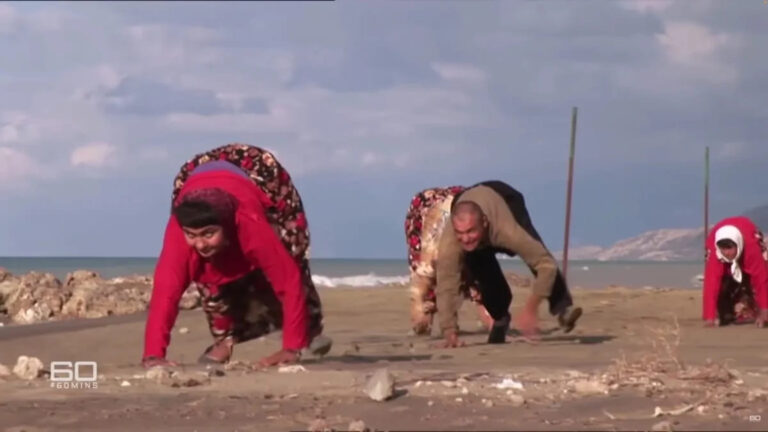In a quiet village in Turkey, the Ulas family stands out due to a unique and surprising characteristic: six of their nineteen children walk on all fours. This extraordinary mode of locomotion has intrigued scientists and sparked considerable interest since it was first documented in 2006.
A Family Unlike Any Other
The Ulas family‘s story came to light through a BBC documentary that shed light on their unusual situation. Among the 19 children, six have been walking on all fours since childhood. This peculiar trait has baffled scientists because such behavior is unprecedented in modern humans.
The Scientific Mystery
These children exhibit extreme balance issues and cognitive impairments that prevent them from walking upright. Their skeletal structures resemble those of primates more than humans, and they have a shrunken cerebellum. Unlike monkeys, the children use their palms rather than their fingers to move around.
Unraveling the Cause
Some researchers initially speculated that this phenomenon could be a form of “devolution,” suggesting a regression in human evolution. However, this theory has been widely disputed. Environmental factors are now believed to play a significant role since the children were never encouraged to stand up and walk during their early development.
Seeking Solutions
The story of the Ulas family took a hopeful turn when they met with a physiotherapist. With specialized equipment and training, the children have been given the tools to help them learn to walk upright. This intervention has brought new possibilities for their mobility and independence.
The Ulas family’s experience highlights the complex interplay between genetics, environment, and human development. It also underscores the importance of early intervention and support for children with unique needs. While their story is still unfolding, it offers valuable insights into the diverse ways humans adapt and thrive despite extraordinary challenges.






